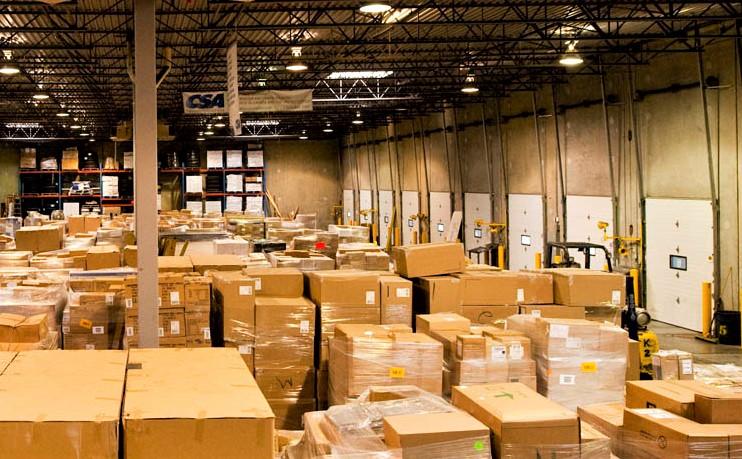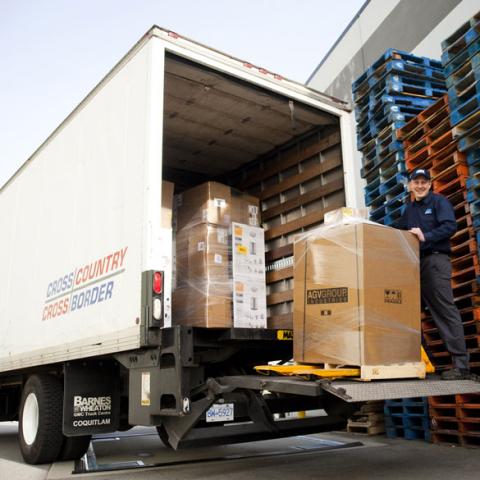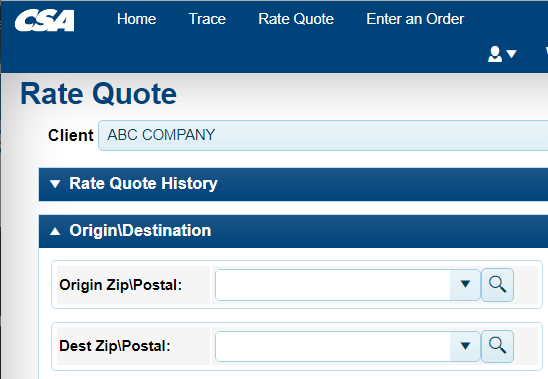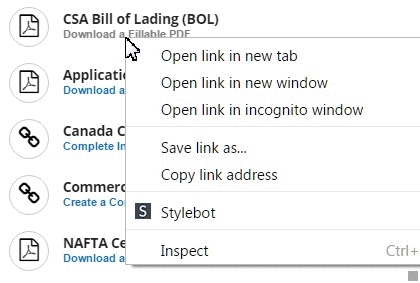The Cheapest Way to Ship Heavy Items
If you’re a business (or an individual) who has shipped large items in the past, you are probably familiar with how expensive it can be. Several factors can cause the shipping costs for large items to skyrocket, which can be frustrating, especially for businesses working within tight budget margins.
At CSA Transportation, we understand that every dollar counts. Whether you’re a small business planning to move your operation across the country or a sizable enterprise that regularly transports equipment from one location to another, our goal is to help our valued customers find the cheapest way to ship an oversized package without compromising the safekeeping of their items or the efficiency of the transportation process.
What Factors Contribute to the Cost of Shipping a Large Item?
Transportation companies consider several different criteria when determining the price of shipping boxes across Canada or the United States. Those looking for the cheapest way to ship boxes to another state (or a Canadian province) will want to know these factors to secure the best possible price.
The criteria your shipping provider will take into account include:
- The weight of your shipment
- The distance your package will travel
- The dimensions of your package
- Whether or not you need insurance
- Whether or not your package will be subject to taxes or duty fees
- Whether or not your package contains dangerous goods
- How quickly you need your package to arrive at its destination
- Whether or not your package has any special requirements (Protection from freezing, personal handling for high-value or fragile items, etc.)
About Weight Density and Cost
When looking for a cheap way to ship heavy items, customers must understand how the weight density of their package influences the price of transport. Learning how to calculate shipping costs accurately can help customers save money and choose the most cost-effective shipping solution for their needs.
In the past, shipping companies focused on weight when providing cost estimates to their clients. But this created a problem: a significant amount of light items began to take up space, costing trucking companies more money.
To address the issue, these companies decided to change their strategy for shipping large items to Canada or across the United States by factoring in density and weight.
Dimensional weight pricing is determined by calculating the cubic size of a package. This is achieved by multiplying its length, width, and height. Then, the cubic size is divided by a DIM (dimensional) divisor, a figure set by the carrier to represent a base weight of 1 cubic foot of space.
For example, if you have a package that is 48 inches long, 40 inches wide, and 40 inches high that weighs 800 pounds, plus the DIM divisor for your carrier is 138.4, the dimensional weight would be 555 pounds (most carriers round up to the nearest pound).
About Distance and Tracking Costs
Distance is another important consideration for those trying to find the cheapest way to ship heavy items. Most couriers use a zoning system that breaks up their service area into zones to determine how much a shipment will cost. do the same when shipping by the pallet.
In the United States (and Canada), for example, large items may need to be shipped over long distances, which are calculated based on the distance the package will be transported from its point of origin, through the carrier's network, ending with delivery to the destination.
Each trip segment involves costs; sometimes, the last-mile delivery (from the distribution center to the recipient’s door) can make up a significant portion of the overall cost of the shipment.
For example, a package/pallet that has to travel less than 30 miles from a transport company's distribution center may fall into the Zone 1 category. However, a package that has to travel between 151-300 miles could be labelled a Zone 4. The cost for a large or oversized Zone 1 package might be $55.00, while the rate for a Zone 4 package might be $180.00.
Based on this system, the cheapest way to ship heavy items in Canada or to another state is to minimize the distance your package travels by choosing logistics companies with distribution centers in your shipping regions. In other words, evaluate the length of your supply chain and the proximity of your suppliers and customers to your chosen carrier's terminal network.
About Customs Costs
Many customers overlook this key factor when seeking the cheapest way to ship heavy items, only to receive a steep invoice when their item reaches an international border. It’s crucial to keep customs costs at the forefront of your mind.
Each country has its own method for calculating customs costs. Factors like the type of goods in your shipment, how expensive they are, and whether or not the receiving country has regulations for your specific item will all come into play.
It’s also important to be completely upfront and honest in all paperwork associated with your shipment. If a country suspects you have undervalued the goods in your shipment or are trying to fool the system in any way, you could be given a hefty fine, and your package could be denied.
For these reasons, we advise all customers to research the applicable customs rules and regulations of the countries you ship to when determining the cheapest way to ship heavy items. If you need help, our team specializes in shipping between the US and Canada.
Why Freight Shipping is More Budget-Friendly Than Other Methods
We recommend freight shipping when our customers are looking for the best way to ship large boxes, including heavy or super-sized items.
LTL freight shipping offers several benefits that parcel shipping companies like FedEx and UPS cannot provide.
Two of the most critical benefits of freight shipping are:
- No weight and size restrictions
- Route flexibility
Most parcel shipment companies place a limit on package sizes. UPS and FedEx, for example, enforce a maximum weight of 150 pounds. For businesses that are regularly shipping oversized items to Canada or across states, this is a significant hurdle.
Freight companies like CSA Transportation are often the cheapest way to ship heavy items to another state or country because they accept heavy-duty shipments and don’t apply the maximum limit fees that these competitors use. They are also willing to transport oddly-shaped items, which many parcel companies will not.
Most major parcel companies are bound to specific shipping systems that can not be adjusted or customized. For instance, if your package is on a flight that becomes delayed, you’re pretty much forced to wait longer for your package to arrive.
With freight shipping, this isn’t the case. Private transport trucks, container ships, and other delivery methods allow our team to completely control the process of shipping large items across the country.
For example, if your freight delivery driver notices a car collision preventing traffic flow along his planned route, they can decide to take another roadway. This ensures your package is always on the fastest route possible.
CSA Transportation offers LTL freight shipping throughout Canada and the US at highly competitive prices. If you are on the hunt for the best trucking companies in Calgary, AB we've had a distribution terminal in the region since 2006 with many other locations across Canada and the U.S to serve you: View our entire timeline history of LTL trucking terminal openings.
Other Benefits of Freight Shipping with CSA Transportation
In addition to being a cheap way to ship large boxes or other types of cargo, our freight shipping services offer unparalleled efficiency and security.
This is because we have an expansive network of partnerships with many of the leading transportation companies in North America, plus 15 different distribution terminals located throughout Canada and the US.
Our widespread transportation channels allow us to serve companies of all sizes and handle complex shipments that many of our competitors cannot oversee.
We also offer some of the best shipping times in the industry:
- Orders travelling under 500 miles (800 kilometers) arrive within 1-2 days (not including the day of pickup)
- Orders travelling 500 miles (800 kilometers) and 1500 miles (2,400 kilometers) arrive within 3-4 days
- Orders exceeding 1500 miles (2,400 kilometers) can be expected within 5-6 days
Are you ready to experience the best possible combination of service and price in the industry? Request an LTL quote today!









